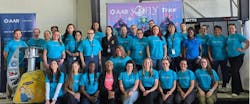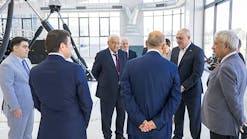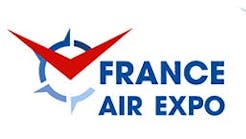The San Diego Air & Space Museum Remembers Harry Robertson
The San Diego Air & Space Museum is remembering Harry Robertson, a crashworthy fuel system pioneer who was credited by the U.S. Army as being responsible for saving over 8,000 lives who was inducted into the International Air & Space Hall of Fame in 2012. Robertson passed away over the weekend. He was 87.
“Harry was the consummate professional and gentlemen,” said Jim Kidrick, president & CEO of the San Diego Air & Space Museum. “His expertise and willingness to take on safety challenges important to the future of aviation is commendable and appreciated. He was a true visionary and leader…and he made a positive difference by saving thousands of lives through his safety focused innovations.”
Robertson was born October 2, 1934, in Phoenix, Arizona. He graduated from Embry-Riddle School of Aviation before joining the U.S. Air Force and entering pilot training. His love of flight led him to participate as an examiner in military aviation accidents and particularly in post-crash fires. Robertson theorized that he could design and develop a fuel system that would survive upon impact, thus saving the lives of many people who might otherwise perish.
In the 1960s, Robertson formed Robertson Research Engineers and for seven years, he and his team members conducted and analyzed crash-test results on over 40 full-scale aircraft. They flung, swung, and dropped 40 full-sized aircraft and hundreds of newly designed crash-worthy fuel systems in order to understand and solve the problem of crash impact on aircraft fuel tanks.
On the strength of a large order from Hughes Helicopters in 1974, Robertson Aviation was established in Tempe, Arizona. The newly formed company produced the “Crashworthy Robertson Fuel Systems,” nicknamed “Robbie Tanks” by the military, for use in civilian and military aircraft. Robertson is known have said, “There’s no reason for someone to survive a crash – and then die in a fire.”
A 1991 U. S. Army proclamation stated that the crashworthy fuel system pioneered by Robertson was directly responsible for saving over 8,000 lives since 1970.
Robertson’s career reflects a lifetime of dedication to aviation safety and service to his fellow airmen. Over the years he earned numerous honors and awards for his pioneering efforts, including an Honorary Doctorate in Aviation Technology from Embry-Riddle Aeronautical; induction into the National Aviation Hall of Fame, Army Aviation Hall of Fame, OX-5 Aviation Pioneers Hall of Fame and International Air & Space Hall of Fame; election to the Embry-Riddle Board of Trustees in 1991; and the Jerome Lederer International award for accident investigation.
To read more about Harry Robertson, visit his International Air & Space Hall of Fame page here: https://sandiegoairandspace.org/hall-of-fame/honoree/harry-robertson
Since 1963, the International Air & Space Hall of Fame has honored the world’s most significant pilots, crew members, visionaries, inventors, aerospace engineers, business leaders, preservationists, designers and space explorers. To learn more, visit: http://sandiegoairandspace.org/exhibits/online-exhibit-page/international-air-space-hall-of-fame.
The San Diego Air & Space Museum is California’s official air and space museum and education center. The Museum is an affiliate of the Smithsonian Institution, and it was the first aero-themed Museum to be accredited by the American Alliance of Museums. The museum is located at 2001 Pan American Plaza, Balboa Park, San Diego, CA 92101. The museum is open seven days a week from 10 a.m. to 4:30 p.m. except Thanksgiving and Christmas.




